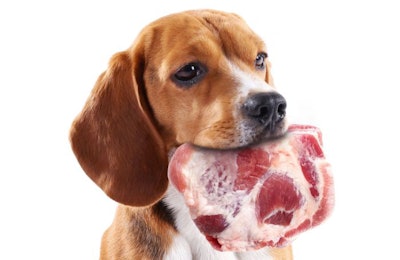
Fueled by interest in ancestral, high-protein, and fresh meat diets, consumer interest and sales of raw meat dog and cat food have been growing consistently over the past few years, despite scientists’ warnings about raw pet food safety. Pet food industry executives, analysts and scientists shared their insights into the raw pet food market in 2018.
Read the entire article about raw pet food sales growing despite health warnings in the March 2018 issue of Petfood Industry.
“If there are new trends coming into the industry, of course you feel it in the number of inquiries we get on the subject,” said Urs Wuest, director of product management at Buhler. “And fresh meat is of course a big issue at the moment.”
Raw pet food sales grew in 2017
Now, more pet food retailers have freezer space for frozen raw diets than five years ago, according to GfK data. Even retailers without freezers have captured the trend with freeze-dried or dehydrated raw pet foods and kibble+ formulations, which are conventional dry pet foods with bits of freeze-dried raw meat mixed in.
“If we're looking at our data, we can see that raw pet food in both frozen, pure form, as well as in freeze-dried or dehydrated form, has grown pretty significantly,” said Maria Lange, business group director for GfK, during her presentation at Petfood Forum 2017. “Looking at this trend and how fast it's growing, I think there's still a lot to expect from these raw categories in the years to come.”
Sales have gone up, along with the number of products in pet food stores, Lange said. Kibble+ is now sold in the majority of stores, followed by freeze-dried and raw frozen.

















